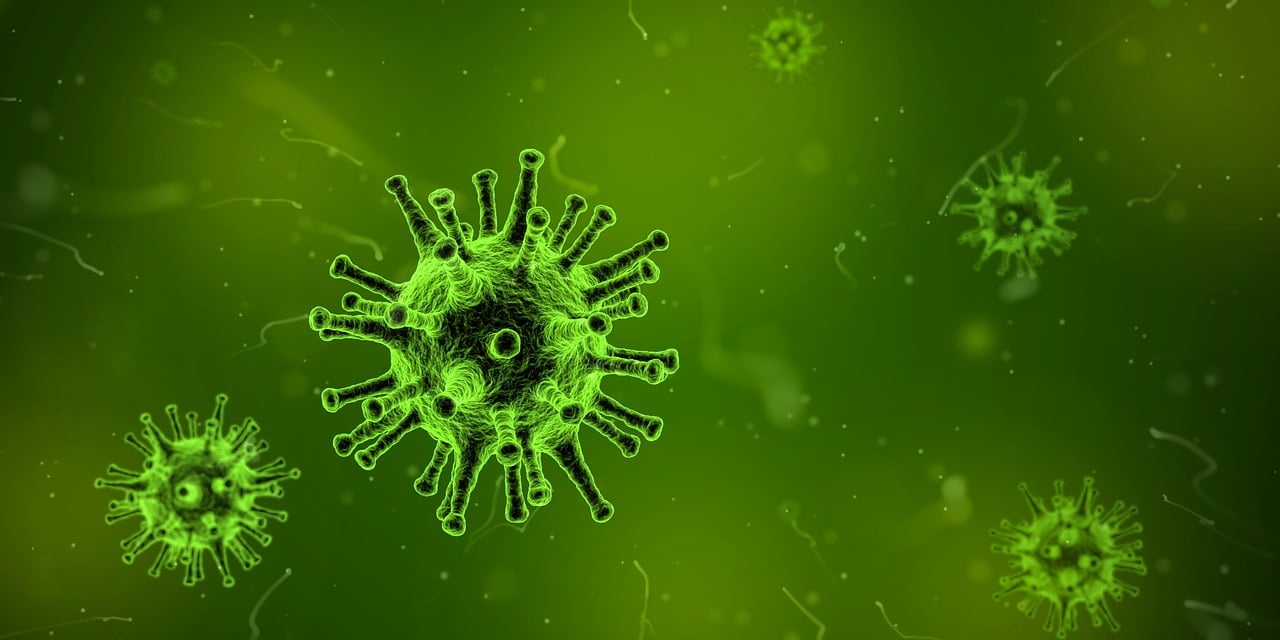Chronic Myelogenous Leukemia-What Are the Symptoms and Causes

Chronic myelogenous leukemia often begins with symptoms like fatigue, weakness, or frequent infections. These signs may seem minor but can indicate a deeper issue. The condition arises from a genetic mutation in blood-forming stem cells. This mutation creates the Philadelphia chromosome, a hallmark of the disease. Nearly all patients with chronic myelogenous leukemia have this chromosome or the BCR-ABL gene it produces. These genetic changes disrupt normal cell growth, leading to the uncontrolled production of abnormal white blood cells.
Key Takeaways
Chronic myelogenous leukemia (CML) often begins with mild signs. These include feeling very tired, weak, or losing weight for no reason. Spotting these signs early helps get treatment sooner.
A genetic change called the Philadelphia chromosome is linked to CML. It makes unusual white blood cells that stop normal blood cells from growing properly.
CML has three stages: chronic, accelerated, and blast crisis. Each stage has different symptoms. The blast crisis stage is the worst and needs quick medical care.
Being around radiation or certain chemicals can raise the chance of getting CML. Knowing these risks can help prevent it or catch it early.
Healthy habits like eating well and staying active can help manage CML. Regular doctor visits and sticking to treatments are also very important.
Symptoms of Chronic Myelogenous Leukemia

Common Symptoms
Fatigue and Weakness
You may notice persistent fatigue or weakness as one of the earliest signs of chronic myelogenous leukemia. These symptoms often occur because your body struggles to produce enough healthy blood cells. Everyday tasks, like climbing stairs or carrying groceries, may feel unusually exhausting.
Unexplained Weight Loss
Losing weight without trying can be another warning sign. This happens because your body uses extra energy to fight the disease. If you experience sudden weight loss, it’s important to consult a healthcare provider.
Night Sweats and Fever
Night sweats and low-grade fevers are common symptoms. You might wake up drenched in sweat, even if your room is cool. These symptoms often result from your body’s immune response to abnormal white blood cells.
Less Common Symptoms
Enlarged Spleen
An enlarged spleen can cause discomfort or a feeling of fullness in your abdomen, even after eating small meals. This happens because the spleen works harder to filter out abnormal cells.
Bone Pain
Bone pain, especially in the arms or legs, may occur as leukemia cells accumulate in your bone marrow. This symptom is less common but can be severe in some cases.
Easy Bruising
You might notice that you bruise more easily or experience frequent nosebleeds. This occurs because your blood lacks enough platelets to clot properly.
Symptom Progression
Chronic Phase
In the chronic phase, symptoms are often mild or absent. Most people get diagnosed during this stage. Blood tests typically show less than 10% of immature cells, or blasts, in the bone marrow. Treatment during this phase is usually effective.
Accelerated Phase
As the disease progresses, symptoms become more noticeable. You may experience worsening fatigue, fever, and weight loss. The percentage of blasts in the blood increases, making this phase more challenging to manage.
Blast Crisis
The blast crisis phase resembles acute leukemia. Symptoms become severe, including extreme fatigue, shortness of breath, and significant weight loss. At this stage, blasts make up 20% or more of the cells in your blood or bone marrow. Immediate medical intervention is critical.
Causes of Chronic Myelogenous Leukemia

Philadelphia Chromosome
Definition and Role
The Philadelphia chromosome plays a central role in chronic myelogenous leukemia. It forms when a genetic accident occurs in a blood-forming stem cell. This accident causes parts of chromosomes 9 and 22 to fuse, creating an abnormal chromosome. This fusion results in the formation of the BCR-ABL gene, which is directly linked to the development of this disease. Nearly all individuals with chronic myelogenous leukemia have this genetic abnormality.
Impact on CML Development
The Philadelphia chromosome drives the progression of chronic myelogenous leukemia. The BCR-ABL gene it produces acts like a switch that stays permanently "on." This leads to the uncontrolled growth of abnormal white blood cells. These cells crowd out healthy ones, disrupting normal blood cell production and causing many of the symptoms associated with the disease.
BCR-ABL Gene Mutation
Mutation Process
The BCR-ABL gene mutation occurs when the Philadelphia chromosome forms. This gene produces an abnormal protein that changes how white blood cells grow and divide. Unlike normal cells, these mutated cells multiply rapidly and resist natural cell death.
Effects on Cell Growth
The BCR-ABL mutation has several harmful effects:
It causes an overproduction of abnormal white blood cells.
These cells fail to protect your body from infections.
They accumulate in your bone marrow and bloodstream, crowding out healthy blood cells.
This imbalance leads to the symptoms and complications of chronic myelogenous leukemia.
Additional Factors
Environmental Triggers
Certain environmental factors may increase your risk of developing chronic myelogenous leukemia:
Exposure to ionizing radiation, such as from nuclear accidents or atomic bomb explosions.
Long-term contact with benzene, found in cigarettes and petrol.
Occupational exposure to chemicals used in industries like rubber or plastic manufacturing.
These triggers can damage your DNA, potentially leading to the mutations that cause this disease.
Genetic Predispositions
Unlike some cancers, chronic myelogenous leukemia is not hereditary. The disease results from mutations that occur during your lifetime, not from inherited DNA changes. Studies show that identical twins of patients do not have a higher risk than other siblings. This highlights the importance of environmental factors over genetic predispositions in the development of this condition.
Risk Factors and Complications
Risk Factors
Age and Gender
Your age and gender can influence your risk of developing chronic myelogenous leukemia (CML).
The average age of diagnosis is 66 years, with most cases occurring between ages 65 and 74.
Males are more likely to develop CML than females, with a male-to-female ratio ranging from 1.2 to 1.7.
Females, however, tend to have better survival rates compared to males.
Radiation Exposure
Exposure to high doses of radiation significantly increases your risk of CML.
Survivors of atomic bomb blasts or nuclear accidents face a higher likelihood of developing this condition.
Ionizing radiation, such as that from these events, is a major risk factor.
Routine medical imaging, like X-rays or CT scans, does not show a strong link to CML.
Family History
Unlike some cancers, CML rarely runs in families. A family history of leukemia does not significantly increase your risk. This disease primarily results from genetic mutations acquired during your lifetime rather than inherited ones.
Complications
Acute Leukemia Progression
CML can progress to acute leukemia if left untreated. The uncontrolled growth of immature myeloid cells may lead to a transformation into acute myeloid leukemia (AML). Certain treatments, such as chemotherapy, can also increase this risk.
Infection Risks
CML often reduces your body’s ability to fight infections. A shortage of healthy white blood cells, known as leukopenia, makes you more vulnerable to bacterial and viral infections. Neutropenia, a specific type of white blood cell deficiency, further impairs your immune response.
Blood Disorders
CML can cause several blood-related complications. These include:
Complication | Description |
|---|---|
A shortage of red blood cells, leading to fatigue and shortness of breath. | |
Thrombocytopenia | A lack of platelets, causing excessive bleeding and bruising. |
Thrombocytosis | An overproduction of dysfunctional platelets, which may still cause bleeding. |
Additionally, an enlarged spleen (splenomegaly) may occur, contributing to abdominal discomfort and reduced blood cell production. You may also face a higher risk of developing secondary cancers, such as those affecting the thyroid, stomach, or lungs.
Early detection plays a vital role in managing chronic myelogenous leukemia (CML). While no routine screening tests exist for this condition, you can take proactive steps to identify it early:
Pay attention to symptoms like fatigue, weight loss, or night sweats.
Report any unusual changes to your doctor without delay.
Routine blood tests, often done during physical exams, may reveal CML even before symptoms appear.
Recognizing the signs and acting promptly can make a significant difference in your treatment outcomes. If you notice symptoms or have concerns, consult a healthcare provider immediately. Taking action early ensures you receive the care you need.
FAQ
What is the difference between chronic and acute leukemia?
Chronic leukemia progresses slowly, allowing abnormal cells to build up over time. Acute leukemia develops rapidly, with immature cells multiplying quickly. Chronic myelogenous leukemia (CML) often starts with mild symptoms, while acute leukemia causes severe symptoms almost immediately.
Can chronic myelogenous leukemia be cured?
CML is not always curable, but treatments like targeted therapy can control it effectively. Many patients achieve long-term remission. Early diagnosis and consistent treatment improve outcomes significantly.
How is CML diagnosed?
Doctors diagnose CML through blood tests, bone marrow biopsies, and genetic testing. These tests identify abnormal white blood cells and the presence of the Philadelphia chromosome or BCR-ABL gene mutation.
Is CML hereditary?
No, CML is not hereditary. It results from genetic mutations that occur during your lifetime. Family history does not significantly increase your risk of developing this condition.
What lifestyle changes can help manage CML?
You can manage CML better by eating a balanced diet, staying physically active, and avoiding smoking or alcohol. Regular check-ups and following your treatment plan are also essential for maintaining your health.
Tip: Always consult your doctor before making significant lifestyle changes.
---
ℹ️ Explore more: Read our Comprehensive Guide to All Known Cancer Types for symptoms, causes, and treatments.
See Also
Understanding Acute Eosinophilic Leukemia: Symptoms and Causes
Exploring Acute Lymphoblastic Leukemia: Key Symptoms Explained
Breast Cancer: Symptoms and Causes You Should Know
Bladder Cancer: Identifying Symptoms and Understanding Causes
